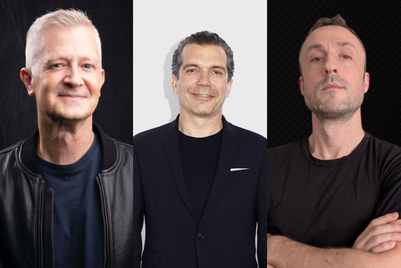
The research by Meeyoung Cha from the Max Planck Institute for Software Systems in Germany (*among others) looked at data from 52 million Twitter accounts or almost half of the Twittersphere and more closely examined at six million more active users.
The research found that popular users with a high number of followers are not necessarily influential in terms of spawning retweets or mentions.
We saw that last year when Jonathan Ross was named as one of the most influential Twitterer in the world topping Downing Street and Barack Obama, despite having fewer followers.
Brand agency JCPR came up with a ‘Twitter index’ that pointed to Ross’ authority rating higher than Stephen Fry and Kutcher (who won the race to add one million followers).
This new research also concluded that retweets are driven by the content value of a tweet, while mentions are driven by the name value of the user.
Do people sometimes forget that? The fact that social media at its heart is about content and you have to have a social media/ content strategy it to get anywhere?
It said that such subtle differences (between popularity and influence) leads to a Twitter imbalance of users who have high follower counts but not necessarily getting many retweets or mentions.
“This finding suggests that indegree (follower count) alone reveals very little about the influence of a user.”
It also found that many influential tweeters can hold sway over a number of topics, which is interesting as many people on Twitter start in one place and migrated into others.
“Focusing on retweets and mentions, we studied the dynamics of influence across topics and time. Our spatial analysis showed that most influential users can hold significant influence over a variety of topics. The top Twitter users had a disproportionate amount of influence, which was indicated by a power-law distribution.”
Most retweeted users
No surprise here. The researchers found that most retweeted users were content aggregation services (Mashable, TwitterTips, TweetMeme), business types (Guy Kawasaki), and news sites (The New York Times, The Onion).
However, while these users got most retweets they didn’t get the most @mentions. Our love of all things celebrities sees to that.
“The most mentioned users were mostly celebrities. Ordinary users showed a great passion for celebrities, regularly posting messages to them or mentioning them, without necessarily retweeting their posts. This indicates that celebrities are often in the centre of public attention and celebrity gossip is a popular activity among Twitter users.”
The research said that if “retweets represent a citation of another user’s content, mentions represent a public response to another user’s tweet” as the focus of a tweet is on content for retweets, while the focus is on the replied user for mentions.
It confirmed this by looking at the usage of conventions in tweets: 92 per cent of tweets that had a RT or via marker contained a URL and 97 per cent of them also contained the @username field.
That showed that retweets are about the content (indicated by the embedded URL) and that people typically cite the authentic source when they retweet. However, fewer than 30 per cent of tweets that were classified as mentions contained any URL, indicating that an @mention is more identity-driven.
Top influencers
The top influencers are generally recognizable public figures and websites. Interestingly, it saw only marginal overlap in these three top lists. These top 20 lists only had two users in common: Ashton Kutcher and Puff Daddy. The top 100 lists also showed marginal over-lap.
The mainstream news organisations in the first group are retweeted the most, but they are not mentioned the most. This is because their names come up mostly when their content get retweeted; it is hard for media sources to engage users with their identities alone.
The second group, comprised of celebrities, is more often mentioned than retweeted because of their name value.
And finally – you have to work it
“Finally, we found that influence is not gained spontaneously or accidentally, but through concerted effort. In order to gain and maintain influence, users need to keep great personal involvement. This could mean that influential users are more predictable than suggested by theory shedding light on how to identify emerging influential users.”
*Co-authors are: Hamed Haddadi, Royal Veterinary College, University of London; Fabricio Benevenuto, Federal University of Minas Gerais, Brazil and Krishna P. Gummadi, also from Max Planck Institute.


.jpg&h=334&w=500&q=100&v=20250320&c=1)


.png&h=334&w=500&q=100&v=20250320&c=1)




.png&h=334&w=500&q=100&v=20250320&c=1)


.png&h=268&w=401&q=100&v=20250320&c=1)


.png&h=268&w=401&q=100&v=20250320&c=1)


